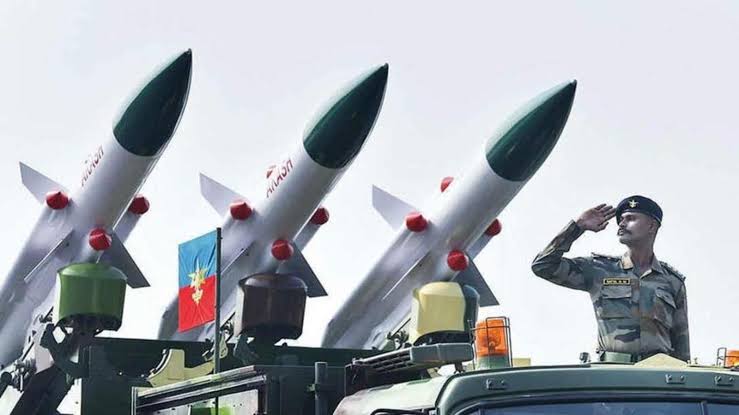Add your promotional text...
India's Rise: From Defense Importer to Global Export Leader
Synopsis: Explore India's remarkable transformation from the world's largest arms importer to a burgeoning arms exporter. This blog delves into India's surge in defense exports, driven by indigenization efforts and revitalized projects like the LCA Tejas. With growing international interest in Indian defense technology, discover how India is reshaping global perceptions and its economic landscape through robust defense manufacturing and strategic exports.
VIEWS ON NEWS
By Vishwash Saxena
6/30/20242 min read


The Russia-Ukraine conflict underscored the critical need for self-reliance in defense systems as Western nations scrambled to produce and supply weapons to Ukraine. Meanwhile, Russia faced difficulties procuring military supplies from other countries. This global scenario has highlighted the importance of self-sufficiency in defense for countries worldwide.
India, traditionally the largest global arms importer, has remarkably transitioned into an arms exporter over the past decade. This shift represents a significant change in the narrative of India's defense industry. Both defense public sector units (DPSUs) and private sector companies have played crucial roles in this transformation.
Surging Defense Exports
India's defense exports reached an all-time high of Rs 210.8 billion (approximately US$ 2.6 billion) in the financial year 2023-24, marking a 32.5% increase over the previous year. Over the last decade, defense exports have surged dramatically, growing 21 times from Rs 43.1 billion between 2004-05 and 2013-14 to Rs 883.2 billion from 2014-15 to 2023-24.
This rapid growth is driven by the government's strong push for indigenization, aiming for self-reliance in defense. The rise in defense manufacturing and exports has propelled many PSU defense stocks to new heights. While the private sector has led this growth, defense PSUs have also made significant contributions, with the private sector and PSUs contributing approximately 60% and 40%, respectively. Additionally, the number of export authorizations issued to defense exporters increased from 1,414 in 2022-23 to 1,507 in 2023-24.
Revitalizing Stalled Projects
Projects that had been stalled for decades have regained momentum. One prime example is India's indigenous combat aircraft, LCA Tejas. Sanctioned in the 1980s, Tejas saw its maiden successful flight during the Vajpayee government in 2001. However, progress was slow until 2016, when Tejas was inducted into the Indian Air Force. Currently, the Indian Air Force has about 40 Tejas Mk1 aircraft and has placed an order for approximately 83 more improved versions, Tejas Mk1, with Hindustan Aeronautics Limited (HAL).
India exports a range of defense products, including ammunition (from 5.56 mm to 155 mm) to countries such as the UAE, Egypt, Indonesia, and Thailand. Fast interceptor boats are exported to Mauritius, Seychelles, and the Maldives, while defense electronics are shipped to the US, UK, and France. Additionally, countries like the Philippines and Vietnam are interested in purchasing BrahMos supersonic cruise missiles, jointly developed by Russia and India. Indonesia is also a potential buyer.
New Projects and Modernization Efforts
The Indian armed forces are undergoing modernization with state-of-the-art technology. Recently, the Modi government approved the development of fifth-generation fighter jets, with the first flight expected by 2030. Efforts are also underway to acquire new submarines for the Navy and develop a new lightweight tank for the Army, primarily aimed at countering China. Several other missile projects are progressing, many of which have undergone successful testing.
With countries like Vietnam, the Philippines, and Armenia expressing interest in cutting-edge Indian-manufactured weapons such as BrahMos supersonic cruise missiles, Pinaka multiple rocket launchers, Akash anti-aircraft missiles, and Tejas fighter aircraft, defense exports are expected to soar over the next five years.
In Conclusion, India's transition to an export powerhouse in the defense sector is a testament to its robust technology and self-reliance. This shift not only enhances India's defense capabilities but also opens new avenues for economic growth through exports. However, investors should exercise diligence when selecting stocks in India's defense ecosystem, focusing on under-the-radar stocks with long-term potential. As India continues to expand its defense manufacturing and export capabilities, the future looks promising for the country's defense industry.
